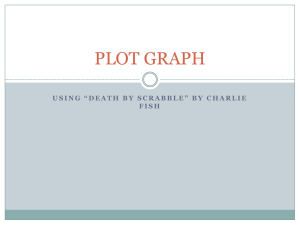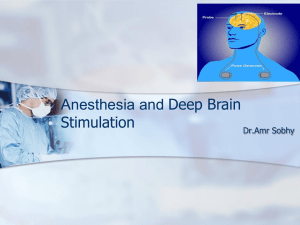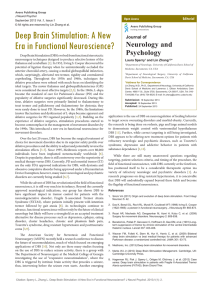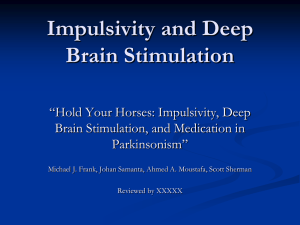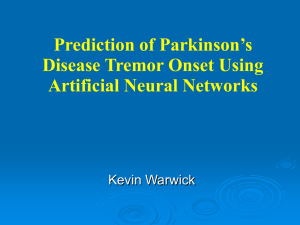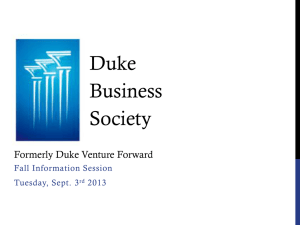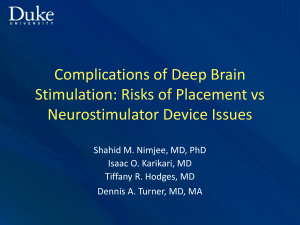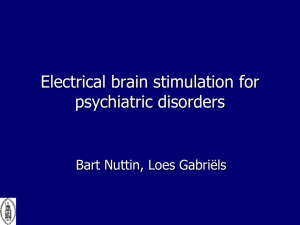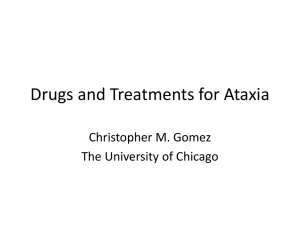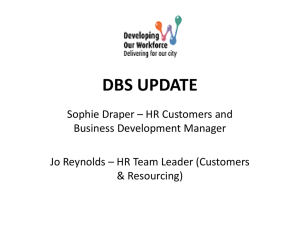Neuro Nursing - HarvardNeurosurgeon.com
advertisement
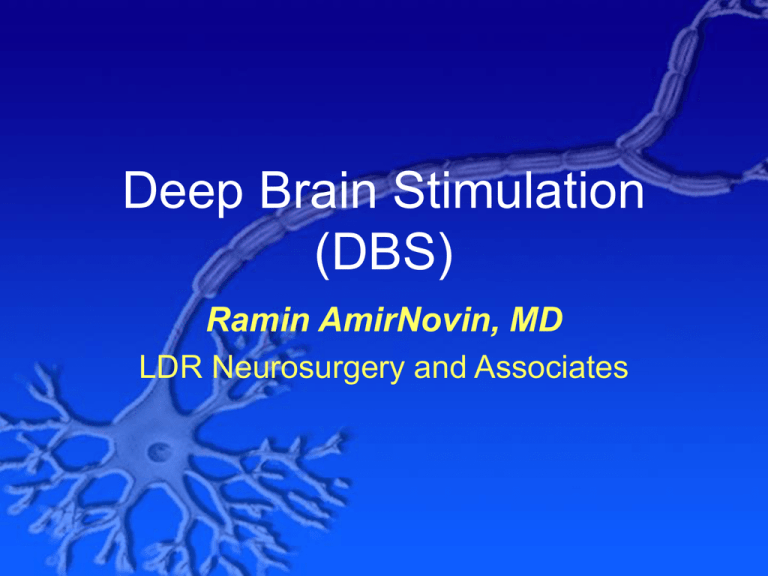
Deep Brain Stimulation (DBS) Ramin AmirNovin, MD LDR Neurosurgery and Associates Intro to Parkinson’s Disease (PD) • Degenerative Disease in which the cells of the substantia nigra (part of the brainstem) die & stop making dopamine for an unknown reason. • The loss of dopamine unleashes a cascade of events which causes resting tremor, stiffness, slowed movements, and walking problems • As the disease progresses it can cause a decrease in cognition and create confusion. • 1% of people above 65 yo have PD (1.5:1 male:female) • ~0.5% have PD but are not diagnosed. • 25% misdiagnosis by non-PD neurologists • 8% misdiagnosis by PD neurologists Intro to Parkinson’s Disease • Dopamine replacement (in the form Sinemet) is the first-line therpay for PD. • Dopamine pills help reverse much of the tremor, stiffness, and walking problems. • The pills only last a short time and at times require as much as five to six times a day dosing. • There is no cure for PD at this time. • PD is progressive in nature and most patients require increased doses of Dopamine w/ time. • Eventually, most patients are refractory to medications and have a very poor quality of life. Intro to DBS • Deep brain stimulation (DBS) is the most promising surgical therapy for PD. • It involves putting an electrode on each side of the brain and stimulating the brain using a battery which sits underneath the clavicle. • It's like a pacemaker for the brain. Intro to DBS • Exact mechanism of action is still unclear • Proposed mechanisms for DBS therapy: – Inhibits the STN within the indirect pathway and hence dis-inhibits the patient’s movements. – Promotes the release of Dopamine in the brain through stimulation of the dopamine fibers tracking dorsal to the STN PD DBS Patient Selection • Patient selection is done by a multi-disciplinary committee (include Neurologists, NeuroPsychologists, Neurosurgeon, and sometimes a Psychiatrist) • PD DBS inclusion criterion: – Previous response to Dopamine therapy – Reduction of motor UPDRS score by 30% in the ‘medication-on’ state – Severe motor tremor and dyskinesias despite optimized medical therapy – Less than 75 years old • PD DBS exclusion criterion: – Dementia, hallucinations or depression – Severe medical problems Surgical Technique • Overview of surgical technique: – Apply frame/frameless adapter to awake patient – Obtain fine-cut MRI and CT of the Brain with the frameless fiducials (or frame) in place – Choose surgical target (STN [~5x4 mm], GPI, or Vim thalamus) on a computer system – Use image guidance & MER (MicroElectrode Recordings) to aim for the target – Remove micro-electrode(s) & place macroelectrode into the best path through the target – Test stimulate the patient to rule-out side-effects – Bring patient back for battery placement in 6 weeks Surgical Technique • Frameless vs Frame-based surgery: – Less bulk and discomfort for patient; proven equal efficacy Frame-based MicroElectrode MicroElectrode stand/driver Targeting Platform Frameless Head Surgical Technique: MER • MER: – Different parts of brain have different firing patterns – Used to refine MRI targeting technique in the OR – Shown to have better outcomes compared to MRI-targeting alone Surgical Technique: MER • Example: Surgical Technique • Special considerations for awake PD patient: – More TLC needed for these patients – All needed instrumentation should be ready as to decrease waiting times in the OR and decrease surgical time for awake patient. – Less talking among staff (includes surgeons) – Conversation between staff should be kept professional even when there are problems – Avoid anxiety inducing words (e.g., ‘knife’ is ‘#10’, ‘Stitch’ is ‘3-0 vicryl’) – Any music should be calming in nature (patient may request their own music) Surgical Technique • DBS lead stimulated to test for side effects and confirm location: Expected Too Lateral Too Medial DBS Outcomes • Outcomes: – 60-80% decrease in tremor and walking difficulties – 50-80% decrease in meds – good long-term stability of motor improvements over a 10 yr follow up – No change in cognitive deterioration. DBS Outcomes DBS Outcomes • Major problems: – Transient confusion in 10% of patients (more common in older patients and bilateral cases) – Need for battery changes – Infections (rare but require full removal) – Stimulation dependent problems (e.g., buzzing in the head, mood changes, tingling, etc) Other Uses for DBS • Well studied uses for DBS: – PD – Dystonia – Tremor – Chronic Pain • Future directions for DBS: – OCD – Intractable Depression – 80% response in studies – Tourette’s Questions? a • b
